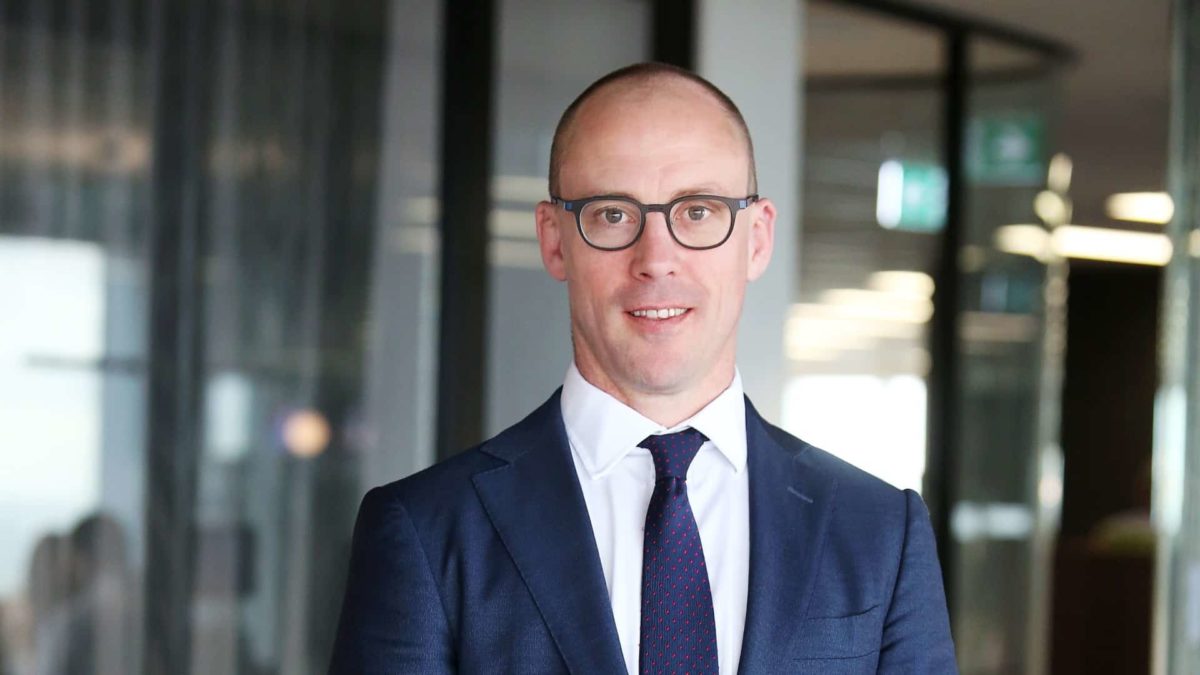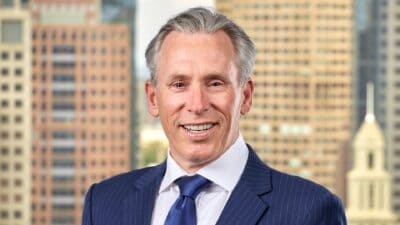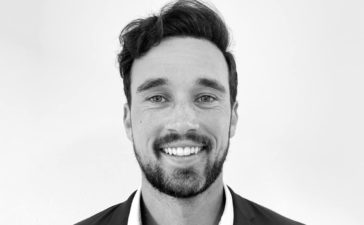With the onset of the COVID-19 pandemic, investor interest in well-positioned ASX healthcare shares and Australian healthcare properties has rocketed.
There currently are no pureplay ASX-listed healthcare real estate investment trusts (REIT). But there are unlisted funds investing exclusively in Australian healthcare real estate.
With that in mind, the Motley Fool reached out to fund manager Andrew Hemming, the managing director of Centuria Healthcare.
Centuria Healthcare, a subsidiary of Centuria Capital Group (ASX: CNI), provides unlisted healthcare property investments to individual, wholesale and institutional investors.
We were particularly interested in the Centuria Healthcare Property Fund (CHPF). This is a new, open-ended, unlisted fund with a current portfolio of more than $115 million worth of healthcare assets.
With additional asset purchases in the pipeline, CHPF currently owns the Forrest Family Practice (tenanted by BGH Capital), Bloomfield Medical Centre, Vermont South Medical Centre and Hobart Day Surgery properties (all tenanted by Nexus Hospitals).
Retail investors can invest with $10,000 or more.
CHPF's last distribution for October 2020 was 5.75 Cents Per Unit (CPU), annualised*.
Read on for the full interview with Andrew Hemming.
Can you give us an overview of the Centuria Healthcare Property Fund?
We set the Centuria Healthcare Property Fund with a different structure to what we've done before. What we've done before are single property and multi-property closed-end funds. This is a multi-property, open-ended fund, with a limited liquidity facility. And with a seed portfolio of roughly $115 million, which we intend on growing with our near-term pipeline and into the future.
All transactions were off market. Most transactions were operator led, which is an important point of difference for us. In 2013-14, we decided strategically to focus on a partner-based approach to delivering a pipeline of healthcare properties.
How does the partner-based approach work?
For example, Nexus Hospitals is one of our aligned partners. Nexus is 75% owned by Queensland Investment Corporation, and 25% owned by doctors and management. They currently operate 15 hospitals, and they're trying to substantially grow over the next few years than they have over the past, say, seven years. We're their partner of choice.
In today's economic environment, people are wanting to either invest into yield-driven assets or invest into industries that are more robust or resilient. Clearly, we've seen over the last 6-8 months that, as a result of COVID, industrial (sheds and warehouses) and healthcare properties (hospitals and medical centres) are attractive.
We focus on properties that are going to bring us those opportunities, because in our world these opportunities do not typically exist.
There are a lot of hospitals in Australia, both public and private, where there may be an opportunity to securitise through a sale and leaseback from the operator with a long-term lease into the future, but they don't exist today.
So, you've got to create the product.
How do you create that product?
The best way for us to create our product is through the lens and ability of the operator.
As in the example with Nexus, the operator is a business with a high degree of capitalisation, vast experience in terms of management prowess as well as clinical experience, like surgeons and nurses. Those are highly specialised assets.
We work very much in partnership with the operator to find the right location and to create the product type… the opportunity. In creating these healthcare real estate opportunities, we have a highly skilled team in finding, structuring and developing to own the real estate over the long term.
There are several ways we are able to structure and fund these transactions:
First, a straight forward sale-and-leaseback where the healthcare operator sells its property with a long-term lease in place.
Second, a fund-through structure where we would buy the land with leases in place, fund the construction, and own the property over the long-term.
Or third, as we've done more recently, we may come upstream in terms of risk and develop the property. We would ensure we have the anchor tenant with a lease in place which provides us with greater clarity in which other healthcare users can pack around that healthcare operator.
Let's say a well-known operator has interest in a site, and the operator has the doctors as well. It will likely occupy 50% of this development. We would acquire the land with 50% leased to this operator. We would then set about leasing the remaining space with complementary healthcare businesses, and in doing so create a sustainable healthcare ecosystem.
This strategy is very similar to neighbourhood shopping centres, if you have a core user there.
The other tenants would be a GP primary care business, a radiology business, a pharmacy, consulting suites, maybe even radiation oncology. They're all complementary businesses to the anchor tenant.
And the fund paid a 5.75 CPU annualised distribution in October. How did you determine that and what's the outlook?
We arrived at the number for 2 reasons. One, because the off-market seed portfolio we delivered to this fund had a weighted market capitalisation rate of 6.06%, therefore we were able to deliver a 5.75 CPU annualised distribution in October.
As for the future? With interest rates and the overall economy being weaker, we expect there'll be a flight to quality. We expect cap rates in healthcare properties will compress, because there'll be more interest in them. There'll be a weight of money moving into this space. More than we've seen historically.
We'll continue to do these deals off market. We are still confident, at least in the next 6-12 months, in acquiring new properties for this fund at an accretive capitalisation rate of 5.75%, because they'll be off market deals and we'll be doing them efficiently. Along with existing property acquisitions, we intend on continuing to buy land and funding construction, creating the benefit of reduced tax leakage from stamp duty.
Are the Centuria Healthcare Property Fund's tenants different from those in other sectors?
These are highly specialised assets in which you've got alignment from the customer on the demand side as well as the user, who's the tenant. The tenant is likely to be there for more than the initial lease term.
For example, there is the radiation oncology bunker that we built and own in Concord West (Sydney). The tenant spent $15 million on 1 piece of equipment. They've also spent an additional $5-7 million on the other warm shell fit out of that hospital. The equipment is housed in 1.5m thick concrete bunkers which are not going anywhere.
So that business makes the economic decision on whether they want to be there or not based on the type of demand and the density of that demand. As well locationally, this is a business that's not too far away from the public hospital that's just had $341 million spent on it in Concord.
These are businesses that look at the type of population, the economics of that population, the ancillary services within the building and in the location. And if they think their business is going to be there for a longer period of time, 20 years, if not longer, they are prepared to spend quite a bit of money on their fit out and pieces of equipment.
And that makes them sticky.
What essential boxes does a healthcare asset need to tick before you'd consider buying it?
We really look at the layers of alignment. You want to look at the demographics. You've got to be able to build something that's more specialised than you think it's going to be used for over time if the population's going to be there.
No matter what, it's not transient. Not like a mining town, which is a transient population in boom or bust cycle. So, we look at the depth and type of demand.
And we evaluate the type of use and the covenant. The covenant for us is not just the financial capacity of that operator tenant over that period of time, but also its reputation.
We would look at the strength of the covenant from a financial perspective as well as its ability in terms of experience to drive that type of business model over 20-30 years.
Then we look at what we can pack around it. You've got a high-grade covenant – a blue chip hospital, for example – what other uses and services can you pack around that hospital to make it stronger?
People talk about ecosystems. This translates to referral networks that work between a primary care business, a hospital business, a radiology business, a pharmacy and a consultancy. They're all relying on each other to attract that customer. And once that customer's there, that customer is likely to stay in that building and spend more money. So from an economic viewpoint it's quite efficient and more sustainable in nature.
Lastly, from the built form, there are builders that have got good depth of experience in terms of building a hospital or radiation oncology bunker and those who just don't.
Has COVID-19 changed your investment criteria? And how has it impacted your tenants?
Healthcare tenants have been more robust and resilient than other sectors for obvious reasons.
Even when the Federal Government shut the doors on elective surgery, volume has since recovered (and in some cases surged past previous levels). This is a result of the pent-up demand.
COVID-19's taught the healthcare sector some important lessons in terms of isolation. Aged care has been impacted quite materially from COVID-19, and the thinking has already started into how to contain the spread of infectious disease in the future. In surgical hospitals, it will be about ventilation systems and improved sterilisation units, for example.
COVID-19 has taught every industry that being nimble, having a nimble balance sheet, is vitally important.
That goes to operating their business more effectively.
One thing is to get cash for a sale and leaseback. That's great, but what do you do with it?
You want to invest it into things that are going to make your business better. To make the experience of the customer, the patient, better. Both from a financial efficiency perspective and a health outcome perspective.
There hasn't been a listed healthcare REIT on the ASX since 2017. What are your views on this?
Certainly, there's a gap in the listed environment for pureplay healthcare property. I think there's plenty of demand, and it's a matter of when not if. I think there's an opportunity for more than 1 manager to have a listed healthcare fund.
(* Investors should note that past performance is not a reliable indicator of future performance.)









